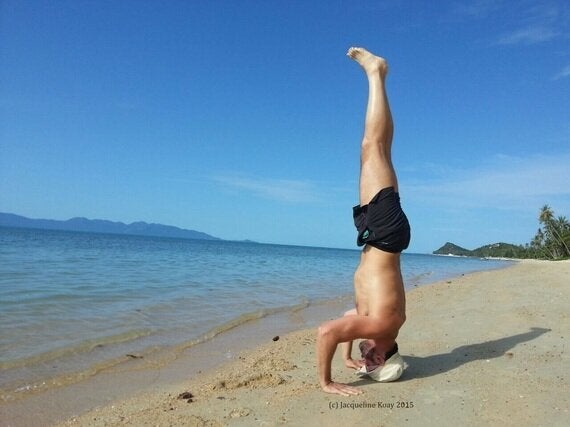Contentious as it may sound, but I don't think humankind have made much progress in real terms when it comes to health and wellbeing despite the powerful vaccines, medicines, antibiotics and vitamins that our laboratories have developed in the last century. Modern medical science may have eradicated major diseases from the face of the planet, but on a daily basis, there are many walking wounded for whom there is no miracle cure.
Since the Newtonian era (1600s), humankind's mindset is still largely trapped in the mechanical world-view where known laws can be successfully applied to unknowns to yield answers with very reasonable accuracy and more importantly, via acceptable logic. 400 years after Newton formulated his laws of motion, we still use these laws to send satellites into orbit and dock space probes on faraway planets.
A shift in paradigm happened sometime in the 19th century with Albert Einstein's Theories of Relativity. A succession of talented scientists followed Einstein's brave new direction to open us to a world where our material reality is based on 'unreal' things. Indeed, Niels Bohr, one of the most well-known physicists of our time, famously commented, "If quantum mechanics hasn't profoundly shocked you, you haven't understood it yet."
It is beyond the scope of this article to give anything but a passing summary of quantum mechanics. Quantum mechanics challenges your perception of reality as it moves you from the clockwork universe of a mechanical world to the infinity of nothingness. The smallest entity, in the light of quantum mechanics, is no longer the tangible atom of our high-school science, but subatomic particles that dart in and out of existence with seemingly illogical and unpredictable impetus. Dig down deeper, and these particles are nothing more than energy functions.
To embrace this new world-view is quite a challenge, as we grow up with the perception that our physical selves and the world around us are tangible, made up of extremely tiny pingpong balls called atoms. Yet quantum mechanics has shown that matter is but an illusion and the whole universe is nothing but energy.
How does quantum mechanics apply to biology, namely the science of living things?
Firstly, the human body is made up of basic cells that organise into organs (lungs, liver, kidney), which then group into systems (respiratory, digestive, excretory). Thus, the human body is akin to a community of collaborating units. Over time, due to specialisation of modern medicine, the units grow further apart from each other until they become separate sciences that don't talk to each other.
However, the human body can never be a machine made up of sum of parts that a technician/physician can isolate, mend in isolation and then plug back into the main unit. The human body is a living, breathing whole that is infinitely more complex than its sum of parts. It is quantum in nature. We observe this phenomena within a simpler unit, namely in quantum computing, where comparatively simple wiring of a digital computer can give rise to extraordinarily complex behaviour. In simple living cells, we see quantum coherence in photosynthesis. We see quantum tunneling in long distance electron transfer of proteins. The UK government made a £120mil investment in quantum technologies in 2014. The world of photons, quarks, bosons and other unseen particles (are they really 'real'?) has just about become mainstream.
But what does this mean to medical science today? Unfortunately, measuring quantum effects in a complex system like the human body in controlled laboratory conditions is near-impossible. It is also too involved to be fully accessible to mathematical proof.
At present, the only proof of the efficacy of this brave new way is in the actual healing and the subsequent restoration to wellbeing of a dis-ease body so that it is at ease with itself and with its environment once again. There is no magic drug facilitating instant cure, but rather, it is about adhering to a gradual and holistic programme that returns the body to its natural state of balance and peace.
How can this be done? In my opinion, (i) through deep understanding of physiology, biochemistry and theoretical physics (ii) by looking at the human body with eyes unconstrained by the Newtonian world-view, and (iii) intimate understanding the dynamics of each individual body with its own self and its ecology.

Links:
First published in www.naturalmedicinelondon.com